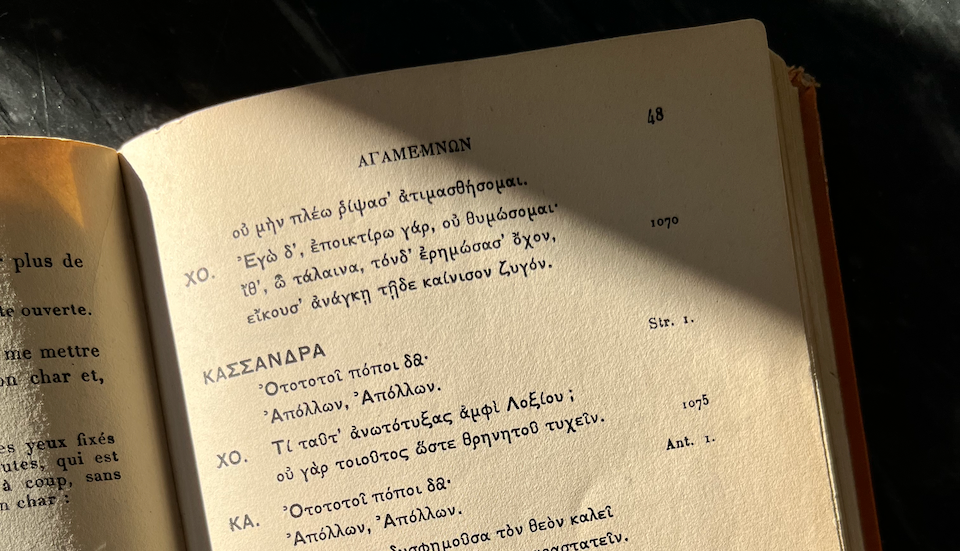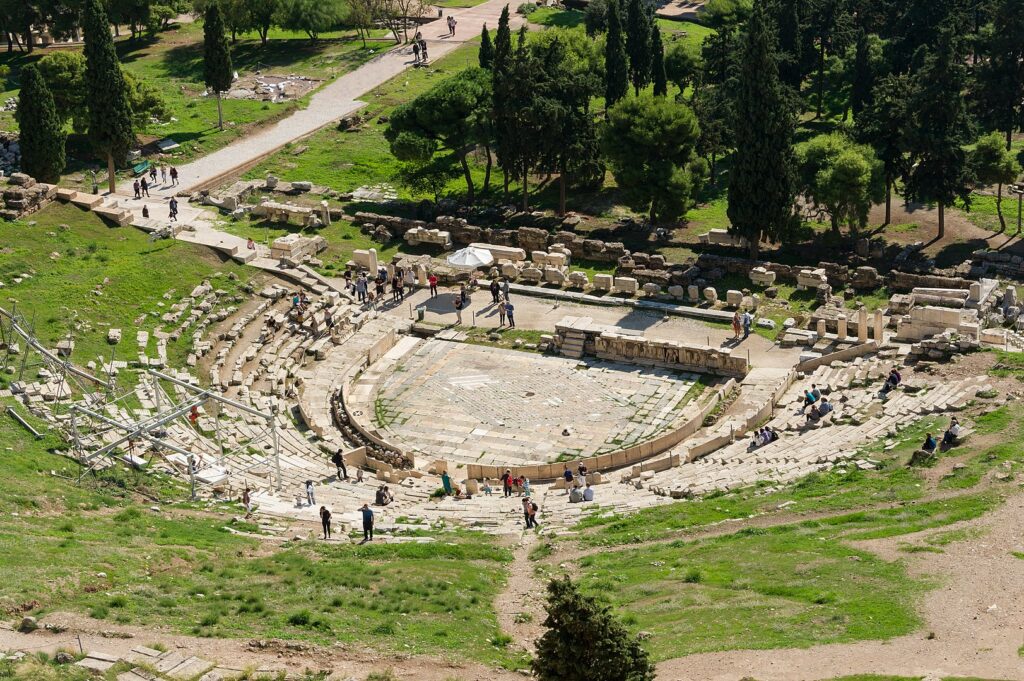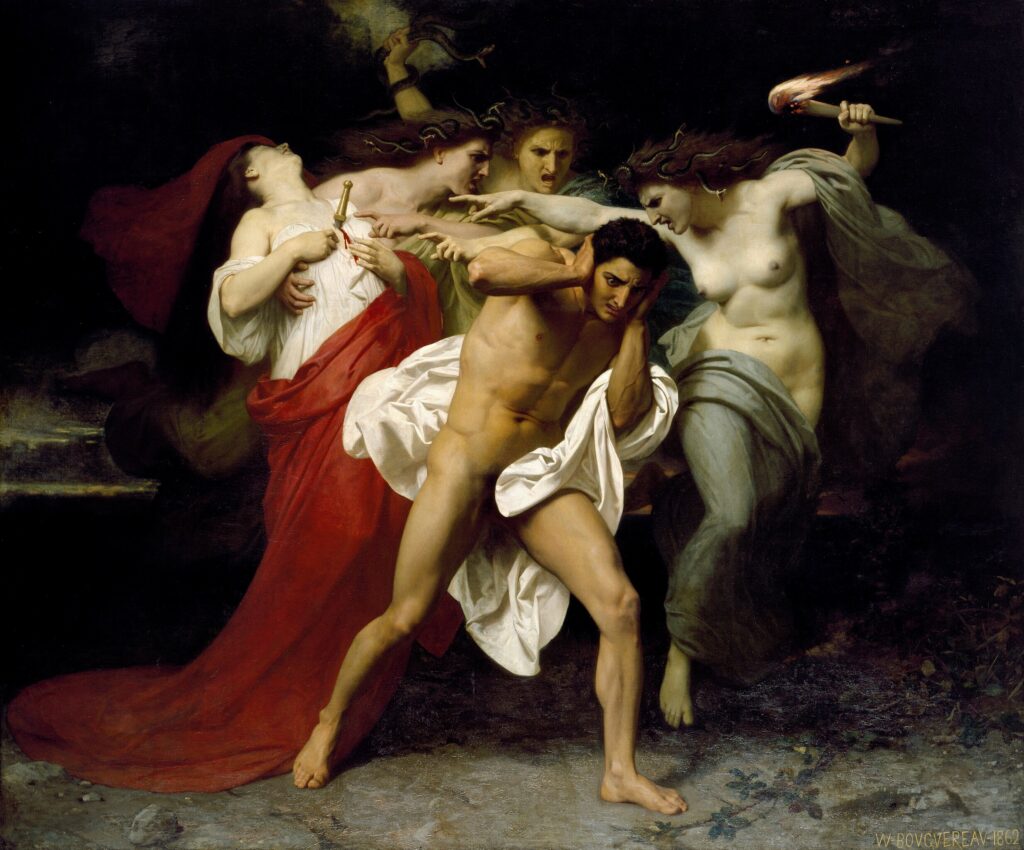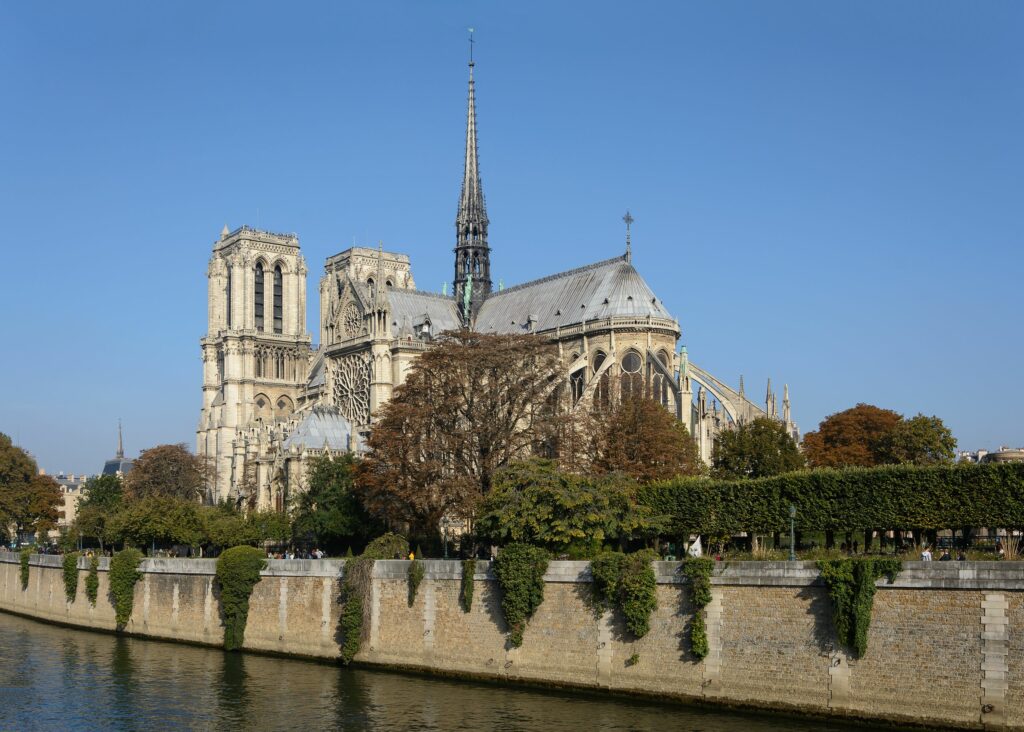Dive Deep into Drama: The Vendôme Circle Book Club Begins with 'The Oresteia'
In The Birth of Tragedy, Nietzsche underlines the essential role Ancient Greek Tragedy plays in an aesthetic that transcends the simple pleasure one takes in admiring beautiful art and beautiful things. The aesthetic he describes is, in contrast, an all-encompassing one and involves a way of life that the self-described Dionysian philosopher elaborates in his other works.

We were therefore not only motivated by chronological reasons—Aeschylus is the first known tragedian—in our choice of the Oresteia as the starting point for our reading, but by much deeper ones: this work raises issues for aesthetics that remain current 2,482 years after it was first performed in the Theatre of Dionysus in Athens.

Multiple themes crisscross the trilogy—Agamemnon, the Libation Bearers and the Eumenides—which is, by the way, the only trilogy to have survived the millennia. Among the most apparent themes that emerge are questions of justice, the birth of democracy, and the place of the Areopagus in Ancient Athens, dramatic and poetic issues, the motif of sacrifice and ritual, the place of religion and myth as well as the role and function of tragedy.

This July we invite you to join us as we plunge into this fundamental text. We shall be exploring some of the fundamental themes while we focus on how this text establishes, contributes to, and manifests an aesthetic. We shall savour the richness of the high drama and the exquisite poetry that has not lost any of its power even today.
The Oresteia has been described as a symphony in three movements. Indeed, it approaches Beethoven’s Fifth in its progression from darkness and violence to the triumphal torchlit procession of the Athenians and the Eumenides—the former Furies transformed into benevolent spirits—led by Athena.
We aim to delve into this text and explore it together through our online discussions, both via Zoom and our dedicated online forum.
From the Oresteia we shall move on to modern classics including Victor Hugo’s Notre Dame de Paris (The Hunchback of Notre Dame), which is a testament to the aesthetics of Romanticism, medieval texts such as Dante’s Divine Comedy and pivotal works such as The Princesse de Clèves by Madame de Lafayette.

In addition, we shall explore philosophical texts including The Birth of Tragedy mentioned above as well as other key texts in the field of aesthetics.
We see this reading and our discussions that emerge therefrom as a fundamental part of the mission of Vendôme Circle and we urge you to subscribe now in order to be a part of the discussion from the very beginning.
We look forward to beginning this adventure with you! Subscribe now as an International Subscriber to join the conversation.
Page through the entire Vendôme Circle Reading List and read more about our book club here:


